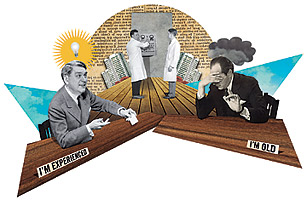 As IB students, you are to study two specific disorders - we will examine one anxiety disorder and one affective disorder. In our examination of specific phobia and major depressive disorder there are many aspects that are important to understand to develop a well-rounded perspective of each of these mental illnesses.
As IB students, you are to study two specific disorders - we will examine one anxiety disorder and one affective disorder. In our examination of specific phobia and major depressive disorder there are many aspects that are important to understand to develop a well-rounded perspective of each of these mental illnesses.
Next, you should be able to explain the cause of each...however, this is not as simple as it may first appear. Causes can be interpreted differently depending on your view of mental illness and psychology in general. Is biology a key factor? What does the data from twin studies seem to show? Is environment a factor or is it more of a trigger? Are these disorders dependent on cognitive factors? Why does this matter?
Finally (for now), what are the risk factors of each disorder? Does it matter your gender, ethnicity, income level, occupation, age, etc...?
You should use information from the DSM-IV to gain critical insight but more research will also be necessary to answer all the questions.








